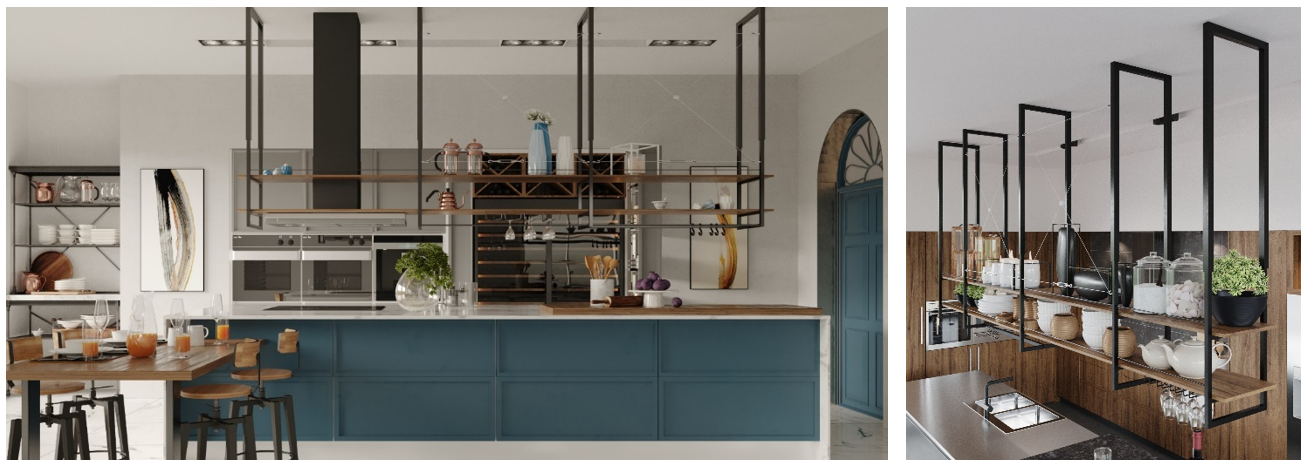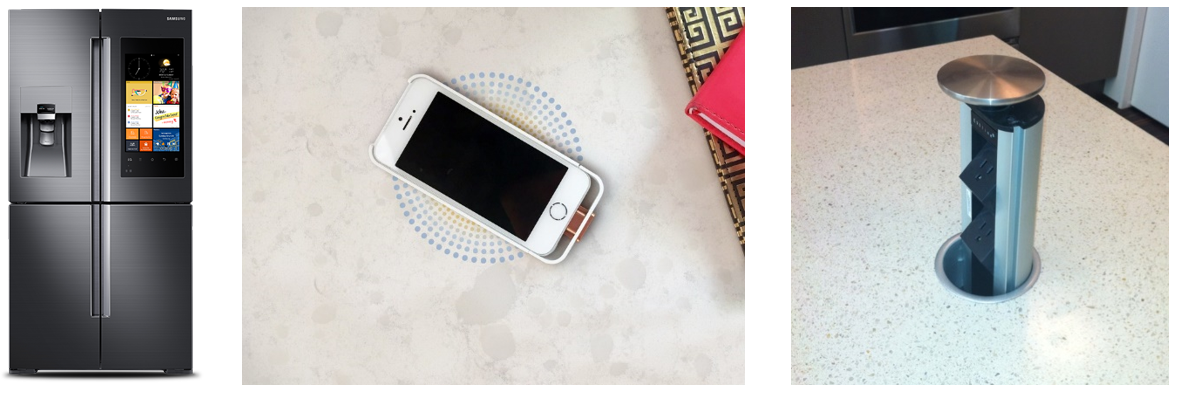As we approach the end of the second decade of this new century, we realise that kitchens from 2000 are nearing the end of their life. What has changed since then?
Here’s some of what has emerged in the last 20 years. How does your current kitchen stand up?
Size.
Kitchen size has expanded along with their role in the home. Kitchens are now required to be an entertaining space, a café, with wine cellaring, snack bar or meals table, home office, a family gathering space, and for watching video or reading.
An open plan design with a sitting area or dining space is now the norm. Formal entertainment in dining rooms has given way in favour of a meals area in the kitchen and/or al fresco. Indeed, few homes nowadays have a separate dining room!

Layouts.
Layouts featuring an Island bench have become most popular. An Island gives the opportunity for better circulation around the work spaces and with an overhanging bench, a handy snack bar. Islands are commonly fitted with a sink and dishwasher, but sometimes a cooking field. This concept brings the cooking action to the island, freeing up valuable wall space for storage, and operating benchtop appliances, coffee machines etc.
Ovens, Microwaves, Steamers, Warming Drawers and Combis are wall mounted arranged in clusters making an impressive statement at eye level for comfortable operation.
Not to take away from the effect, Dishwashers and Refrigerators can now be integrated into the aesthetic with fronts to match the kitchen.
 The scullery has made a strong comeback. Sometimes called a butler’s pantry, storage of foodstuffs and messy processes can be done here in an enclosed space. Just pull the door on the mess!
The scullery has made a strong comeback. Sometimes called a butler’s pantry, storage of foodstuffs and messy processes can be done here in an enclosed space. Just pull the door on the mess!
Fronts. [A collective term for doors, drawer fronts and vertical panels in joinery]
Colour trends are the most rapidly changing element in residential interior design. However, in Kitchens, dalliances with bold colour is only for an adventurous few. Generally, fronts are finished in neutral shades of white, cream or grey. Sophisticated shades give the kitchen an understated, elegant feel. Strong colour accents in accessories create impact and can easily be updated for a fresh look.
Golden wood tones have given way to the greyer tones of smoked oak or deep macassar and palisander. As good solid timber becomes scarce, engineered veneers emulating exotic species and textured laminate wood grains are being used.
Super Matt textured laminates are now available as very practical non-scuff, easy-to-clean surfaces. High gloss finishes are on the back burner for the time being, having had quite a good run over the previous decade.
In the modern styles, minimalist handle free types dominate. Integrated grooves in the front or a recess to allow opening without the use of a handle. Soft neutral shades and veneers, or a combination of the two make up most of the schemes used. Most panelled doors are modelled on the Shaker style, giving a Hamptons look in off-whites, or turning into an Industrial vibe in darker brown or grey. Knobs and handles carry the style through in steel, black iron or ceramic.

Materials.
For Benchtops, Quartz stone is now dominant in organic stone influenced patterns with honed or flamed textures. Unheard of during the nineties, Quartz is now a very popular material for benchtops. Caesarstone, Silestone, & Neolith are among the leading brands. Highly polished finishes have given way to Honed or natural textures. Granite has been left behind, although Marble has found a home in some elegant kitchens, but its softness and porosity make it a choice based on aesthetics alone. Solid Surface in the form of Corian or Staron offer unmatched flexibility of size and shape with a broad colour choice and being non-porous, are stain resistant and the most hygienic.
Lacquers are in neutrals: Polyurethane [Two Pack] in off white, donkey brown – dark greys, finished in satin or matt. Woods are Charred oak and smoky tones. Dark brown woodgrains are greyer than red. Laminates reflect the colour and texture of natural materials with very convincing grain texture which challenge veneers with a more serviceable finish at a considerable cost saving. Metals are brushed or linished Stainless Steel, Matt Black and Copper. Look out for Gold making a comeback in the luxury sector.
Using two or more benchtop materials according to function makes sense: Stainless Steel or Solid Surface for a wet area, quartz or marble pastry bench and a warm timber snack bar for example. Bench thicknesses range from 12 to 120mm.

Functionality.
Quiet please. Doors, drawers and lift fronts can now be operated effortlessly and silently with soft closing. This has put an end to noisy banging doors. Most welcome in an open plan space, just give it a good nudge and it’s closed, quietly.
Although there is an astounding variety of wire-ware interior basketry, the well fitted drawer or pull-out has become the most successful method of storage with ease of access. Specialised fit-outs are available to handle Cutlery, Utensils, Crockery, Glassware, Pots, Pans, Waste and Recyclables etc and can be fitted into pull-outs up to 1200mm wide. Deeper benchtops can be matched with deeper runners creating copious sized storage vessels. They handle more weight and operate gently and quietly with a silent soft close function.
 Overhead, manual and electrically operated lift doors provide unhindered access to glassware etc. See blum.com for more
Overhead, manual and electrically operated lift doors provide unhindered access to glassware etc. See blum.com for more
Accessories.
A Kitchen Gantry offers open display storage and a smart focus over an island or peninsular bench. It’s the hottest look right now in matt black steel with wood or glass shelving giving a cool café or bar feel to the kitchen. Available in a range of sizes, a gantry can be customised to fit any sized kitchen. See casacielodesign.com
Waste Management.
We have become much more aware of our impact on the environment. In the kitchen we now separate our waste, sorting out recyclables and compostable organics from the landfill trash. Bin Systems have been created to accommodate the variety of separation, making this task simple and worry free.
Lighting.
Incandescent, Fluorescent and even Halogen have become passé. LED [Light Emitting Diode] has become the most broadly accepted method for illumination. LED lighting can be found in pendants, recessed down lights, and the now popular strip light which can be used to accent linear elements in a kitchen. LED can be cool and bright, or warm and soft. These long-life lights have very low energy consumption and low heat output meaning extended use will not break the bank.

Tech.
The internet has become an obsession with many of us over the last 2 decades. In the kitchen you can now connect a refrigerator to take stock of its contents and re-order provisions when the stock is exhausted. Your smartphone can be recharged by placing it on a specific area of a Corian benchtop fitted with a re-charging device or by plugging it into a popup USB socket in the benchtop. And you can get your meals under way with a swipe of your phone from the train ride home.
 See: casf.com.au & samsung.com for more information
See: casf.com.au & samsung.com for more information
Advice.
Kitchen design has become a complex process of blending the function of components, practicalities of use and materials into a given space in a way that compliments the overall interior aesthetic. The use of a qualified professional is reccomended. Certified Kitchen Designers can be found via the KBDI [Kitchen & Bathroom Designer’s Institute]. Look for referrals and a portfolio which confirms that the designer is on your wavelength.
Article by Joel Spencer C.K.D. [AUS].
Joel is the founder of Casa Cielo Design, suppliers of Kitchen Gantry Frames.
See: casacielodesign.com

